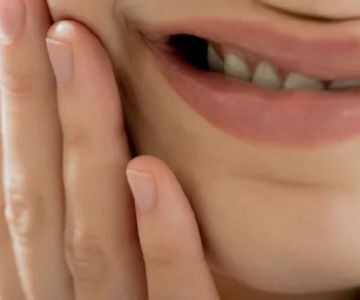What Disease Initially Forms Oral Vesicles?
When it comes to oral health, there are many different conditions that can affect the mouth. One particularly concerning condition involves the formation of oral vesicles—small fluid-filled sacs that can appear on the mucous membranes of the mouth. These vesicles can be quite painful and, in some cases, may be indicative of a more serious health issue. In this article, we will explore the diseases that initially cause oral vesicles, the symptoms to watch for, and the treatments available to manage the condition.
1. Herpes Simplex Virus (HSV) and Oral Vesicles
One of the most common causes of oral vesicles is infection with the herpes simplex virus (HSV), particularly HSV-1. This virus is responsible for causing cold sores or fever blisters around the mouth, but it can also result in painful oral vesicles. HSV infection can cause a cluster of fluid-filled blisters that appear on the gums, lips, or inside of the cheeks. These lesions can be accompanied by fever, swollen lymph nodes, and a sore throat. The vesicles eventually burst and form painful ulcers, which can make eating and speaking difficult.
The initial outbreak of HSV infection is often the most severe, with recurrent outbreaks typically being milder. The virus can remain dormant in the body and reactivate during times of stress, illness, or exposure to sunlight. Antiviral medications can help reduce the severity of symptoms and shorten the duration of an outbreak.
2. Hand, Foot, and Mouth Disease (HFMD)
Hand, foot, and mouth disease (HFMD) is another viral illness that can lead to the development of oral vesicles. HFMD is most commonly seen in young children, although adults can also be affected. This disease is caused by several different viruses, including enteroviruses such as Coxsackievirus A16.
The first signs of HFMD typically include a fever, reduced appetite, and sore throat. After a few days, small red spots begin to appear on the inside of the mouth, which turn into fluid-filled vesicles. These oral vesicles can be very painful, making it difficult for children to eat and drink. In addition to the oral vesicles, a rash may appear on the hands and feet. HFMD is highly contagious, so it is important to practice good hygiene to prevent its spread.
3. Varicella (Chickenpox)
Varicella, commonly known as chickenpox, is a contagious viral infection that can cause a characteristic rash of itchy, fluid-filled blisters. While the rash is most often seen on the skin, chickenpox can also lead to oral vesicles. These vesicles can appear in the mouth, throat, and other mucous membranes in the mouth. The oral vesicles associated with chickenpox can be painful and may make swallowing difficult.
Chickenpox primarily affects children, but it can also occur in adults who have never been infected. The disease is usually self-limiting, meaning it resolves on its own, but antiviral medications can be used to reduce symptoms and prevent complications in some cases. In addition to the rash and oral vesicles, chickenpox can cause fever, fatigue, and general malaise.
4. Pemphigus Vulgaris
Pemphigus vulgaris is a rare autoimmune disorder that causes blistering on the skin and mucous membranes, including the mouth. The condition occurs when the body's immune system mistakenly attacks the proteins that hold skin cells together, leading to the formation of painful vesicles and blisters. These lesions are particularly common in the mouth, where they can cause sores and ulcers that make it painful to eat, drink, or speak.
Pemphigus vulgaris requires prompt medical treatment, often with oral steroids and immunosuppressive drugs to manage symptoms and prevent complications. While it is a chronic condition, many patients can achieve long-term remission with appropriate treatment. Early diagnosis and treatment are critical to prevent the spread of lesions to other parts of the body.
5. Allergic Reactions and Drug-induced Vesicles
In some cases, oral vesicles may form as a result of an allergic reaction to food, medications, or other allergens. Drugs such as penicillin, nonsteroidal anti-inflammatory drugs (NSAIDs), and certain blood pressure medications have been known to cause oral vesicles as a side effect. These vesicles are often part of a larger allergic reaction and may be accompanied by other symptoms such as swelling, hives, and difficulty breathing.
If you suspect that an allergic reaction is causing oral vesicles, it's important to seek immediate medical attention. In some cases, stopping the medication or avoiding the allergen may be enough to resolve the condition. For more severe reactions, antihistamines or corticosteroids may be prescribed to reduce inflammation and promote healing.
Conclusion: When to Seek Medical Attention
Oral vesicles, while often temporary, can be a sign of an underlying condition that requires medical attention. If you notice the sudden appearance of oral vesicles accompanied by fever, pain, or difficulty swallowing, it is essential to consult a healthcare provider. While some conditions, like HSV or HFMD, can be managed with antiviral medications or supportive care, others, such as pemphigus vulgaris, may require more intensive treatment.
By understanding the diseases that initially form oral vesicles, you can be better equipped to identify symptoms early and seek the appropriate treatment. Whether it's a viral infection like HSV or a rare autoimmune disorder like pemphigus vulgaris, getting the right care can help manage symptoms and promote a speedy recovery.



 Westgate Dental Arts3.0 (2 review)
Westgate Dental Arts3.0 (2 review) Coventry Family Dental4.0 (247 review)
Coventry Family Dental4.0 (247 review) Familia Dental3.0 (1028 review)
Familia Dental3.0 (1028 review) Dr. Daniel S. Fife, DDS4.0 (31 review)
Dr. Daniel S. Fife, DDS4.0 (31 review) Dentistry At Suburban Square: Michael I. Wollock, DMD4.0 (1228 review)
Dentistry At Suburban Square: Michael I. Wollock, DMD4.0 (1228 review) Comfort Care Dental4.0 (1156 review)
Comfort Care Dental4.0 (1156 review) The Importance of Oral Health Education During Pregnancy for a Healthy Pregnancy
The Importance of Oral Health Education During Pregnancy for a Healthy Pregnancy Why Skipping Dental Checkups Can Lead to Bigger Oral Health Problems
Why Skipping Dental Checkups Can Lead to Bigger Oral Health Problems Best Tips for Brushing Your Teeth Properly for Healthy Gums: Essential Techniques for Oral Health
Best Tips for Brushing Your Teeth Properly for Healthy Gums: Essential Techniques for Oral Health Advantages of Porcelain Dental Restorations
Advantages of Porcelain Dental Restorations How Can Diabetes Cause Tooth and Gum Problems? Preventing and Managing Oral Health Issues
How Can Diabetes Cause Tooth and Gum Problems? Preventing and Managing Oral Health Issues Healthy Habits for Promoting Good Oral Health and Hygiene: Tips for a Healthy Smile
Healthy Habits for Promoting Good Oral Health and Hygiene: Tips for a Healthy Smile